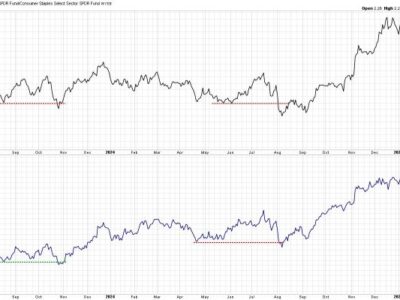
In 2017, Republicans passed the Tax Cuts and Jobs Act, which cut taxes for the vast majority of Americans and simplified taxpaying by making modest reforms to, among other things, the system of itemized deductions. One of the most politically contentious reforms was a new $10,000 cap on the state and local tax (SALT) deduction. This revenue‐raising change was critical in offsetting the cost of the individual tax cuts, and without it, extending the tax cuts will be next to impossible.
Politicians representing high‐income congressional districts in high‐tax states, such as California, New York, and Illinois, have since campaigned on repealing the SALT cap. This same group of legislators is threatening to derail the Republican’s new economic tax package because it does not increase or eliminate the SALT cap. Democrats dealt with a similar dynamic on major legislation last year.
As the 2025 expiration of the 2017 tax cuts draws closer, members of Congress need to remember that a simpler tax code with lower tax rates must also limit or repeal special interest provisions, such as the SALT deduction. It’s much harder to cut tax rates without broadening the tax base.
Below is a refresher on why the costs of the SALT cap are overstated and why the cap is good policy in its own right.
Does the Cap Hurt?
Estimates show that more than 95 percent of taxpayers benefited from a tax cut in 2018 or saw no change in their tax bill. This leaves a small minority of taxpayers who could have seen tax increases. Higher taxes for some is a predictable outcome of any reform that attempts to limit special interest tax provisions that provide large benefits to a few taxpayers at the expense of others.
However, the problem of higher taxes due to the SALT cap is often overstated. In the hardest‐hit congressional districts in New York and California, with the largest share of taxpayers with estimated tax increases, 88 percent of taxpayers benefited from a tax cut or saw no change.
So why the disconnect? Even higher‐income taxpayers who face the new SALT limit likely saw a tax cut for three reasons.
First, the tax law doubled the standard deduction, so many people who previously itemized their taxes now take the larger standard deduction instead.
Second, tax rates were lowered for people at all income levels. The SALT cap increased some people’s taxable income, but lower tax rates mean most people still come out paying less in total taxes.
Third, the 2017 law raised the exemption for the alternative minimum tax (AMT), which denied 5 million higher‐income AMT‐paying taxpayers any SALT deduction. The AMT is a parallel tax system that generally applies to taxpayers with large deductions and certain types of income, requiring them to calculate their taxes twice and pay whichever tax is higher. For these taxpayers, the SALT deduction increased from zero to $10,000.
Why Cap SALT?
The SALT cap and other limits on itemized deductions make tax cuts possible, simplify taxpaying, and reduce subsidies for high‐income taxpayers and state governments.
Capping the SALT deduction is a crucial ingredient in the classic tax reform recipe of lower tax rates, offset with a broader tax base. The $10,000 SALT cap and other limits on itemized deductions raised $668 billion over ten years, one of the largest individual tax changes used to pay for lower tax rates.
Without the SALT cap and other revenue‐raising components of the 2017 compromise, the old tax rules will snap back in 2026, bringing back the old AMT, higher marginal tax rates, and smaller standard deduction. This is the counterfactual; it is not an option to eliminate the SALT cap in isolation. Without limits on itemized deductions, the rest of the tax cuts are unsustainable. Full SALT deduction for higher tax rates is a bad trade for almost all taxpayers—even those in high‐income coastal states.
The SALT cap also simplified taxpaying. The tax code offers taxpayers the choice of taking a flat standard deduction ($27,700 for a family in 2023) or the sum of a list of itemized deductions for specific expenses, including mortgage interest, state and local taxes, and charitable giving. In 2017, 30 percent of taxpayers used the more complicated itemized system. After Congress capped the SALT deduction, curtailed other itemized deductions, and doubled the standard deduction, 9.5 percent of taxpayers itemized their taxes. By one estimate, this saves taxpayers about 100 million hours of time that they would have spent filing their more complicated tax returns.
In addition to simplifying and cutting taxes, capping the SALT deduction was a good governance reform. The SALT deduction is a subsidy for high‐income taxpayers in high‐tax states, paid for by the rest of Americans. It created perverse incentives that limited the cost to states for increasing their taxes because higher‐income taxpayers could write off the tax on their federal return. As I’ve written elsewhere, before the 2017 cap, “the average millionaire living in New York or California deducted more than $450,000 worth of SALT; the average millionaire in Texas deducted only $50,000 and therefore paid close to $180,000 more per year in federal taxes.”
With an uncapped SALT deduction, middle‐class taxpayers are forced to subsidize millionaires who could use the SALT deduction to write off hundreds of thousands of dollars from their federal taxes. Without the cap, taxpayers with identical incomes pay different amounts in federal taxes based entirely on their state of residency.
The new federal tax code cut taxes for most taxpayers and flipped the incentives for state governments so that inefficiently high state taxes are no longer subsidized by taxpayers in more responsible locals.
A Path Forward
The SALT deduction is still distorting tax policy even in its limited form. For example, the poorly conceived temporary $4,000 bonus deduction proposed in the Tax Cuts for Working Families Act, part of the Republican economic tax package, is the result of SALT politics. The proposal attempts to give additional tax relief to taxpayers concerned by the SALT cap.
As initially proposed by House Republicans in the lead‐up to 2017, the correct policy is to repeal the SALT deduction entirely. The $10,000 cap was a political compromise necessary to get enough votes for the bill. Raising or lifting the cap significantly reduces revenue, making it harder to extend or expand the tax cuts when they expire at the end of 2025.








